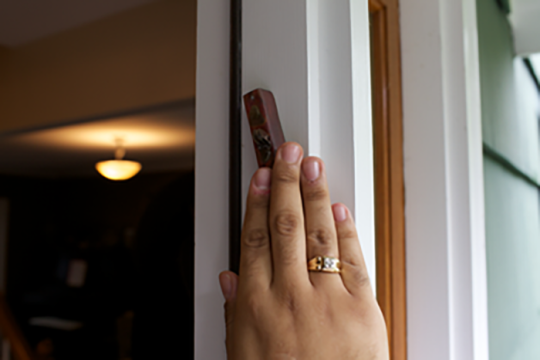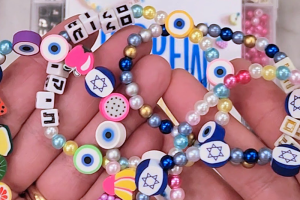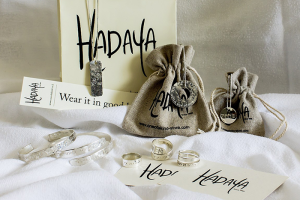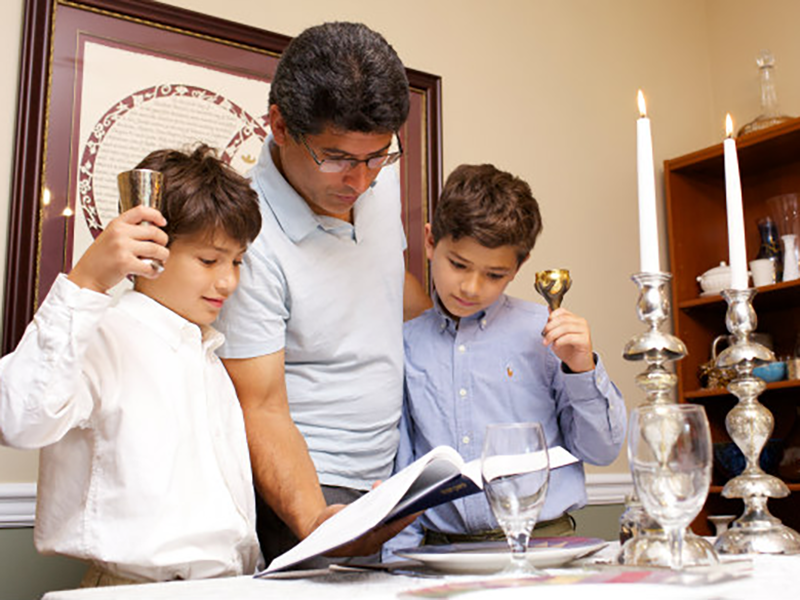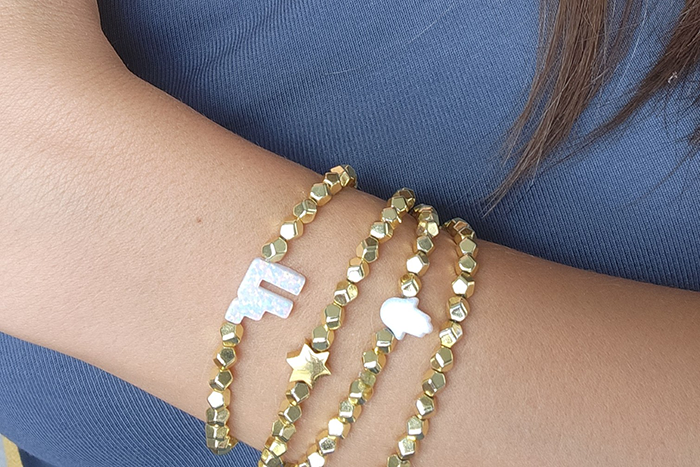
In times of uncertainty, many Jews have found solace and strength in objects that carry meaning beyond their physical form. From engraved rings bearing words of Torah to modern hamsa earrings or beaded Hebrew bracelets, jewelry has become both a quiet statement of pride and an act of resilience.
For designers like Zoe Newman, who moved to the United States from Israel months before October 7th, jewelry became a way to reconnect when her heart felt divided. "It truly felt as though my heart and soul were still there," she said. "I wanted to do something personal to feel closer to Israel and Judaism, to bring a small sense of light and connection to my community."
Newman began by making Hebrew name bracelets, which her children helped her design. What started as a family project grew into "Shalom With Love," a brand rooted in joy and identity. "I believe that, especially in these last couple of years, it's so important to wear Judaica proudly and joyfully," she explained.
For Newman, Jewish jewelry is more than adornment; it's an invitation to creativity and belonging. "I loved creating the Hebrew Aleph-Bet Beading Kits because it empowers people to create their own jewelry and think about how they want to express their Jewishness," she said. "It's such a fun, creative activity to do with friends, family, or community groups... It's a beautiful reminder that Jewish identity can be expressed in joyful, hands-on ways."
That joy is central to Ariel Tidhar's work as well. The New York-based artist infuses her jewelry and ritual art with bursts of color, humor, and unapologetic Jewish pride. "So much about Judaism should be looked at as fun," she said. "[Many people] forget that joy. I celebrate Judaism and Jewish people, especially Jewish women."
Tidhar's collections range from laser-cut acrylic pomegranate napkin rings to bright tzedakah boxes. Her goal is to make Jewish ritual objects feel accessible, modern, and expressive. "It's powerful-whether religious or secular-to wear something Jewish." she said. "Putting on big Jewish earrings is my way of saying: this is who I am. I'm not going to let antisemitism stop me from showing up and being proud."
That sense of defiant pride especially resonates today, as Jewish communities worldwide grapple with rising antisemitism. Tidhar reflected on this tension, recalling the painful irony that her own work centers on the Magen David (Star of David), a symbol Jews were once forced to wear. "I sit in my studio making hundreds of Magen Davids, shipping them across the country," she said. "Not even a hundred years ago, Jews were forced to put them on. Now I get to help people wear it proudly and joyfully. How lucky am I that I can be a liaison for people wearing Jewish motifs?"
Inclusivity is central to Tidhar. Her brand showcases Jews of all backgrounds: LGBTQ+, Black, Mizrahi, Jews-by-choice, and Jewish-adjacent allies. "I'm a Jewish creative; my role is to create community. I want people to see themselves in our brand."
If Newman and Tidhar represent a new wave of Jewish artists finding resilience through their craft, Esh Hadaya carries a generational legacy. His family's Jerusalem-based business, Hadaya Jewelry, began when his father started engraving Hebrew inscriptions onto rings during the early 1980s. What began with one simple phrase - Gam Ze Ya'avor (This Too Shall Pass) - became a movement of wearable faith.
"Hebrew engraved on jewelry serves as a personal bridge between the wearer and our collective heritage," Esh explained. "It transforms a piece into more than just an accessory-it becomes a statement, a memory, a prayer, or a piece of wisdom carried close."
For the Diaspora, he said, these inscriptions connect hearts to homeland. "When someone wears a piece that says or Sh'ma Yisrael (Hear, O Israel) it's not just decorative-it's defiance, it's hope, it's connection. 'My heart is in the east though I'm at the edge of the west' comes to mind."
Resilience, for Hadaya, is woven through generations of family labor, grief, and faith. "To me, resilience looks like waking up before dawn in Jerusalem's Old City, opening the studio even when times are hard, and choosing joy and creativity in the face of uncertainty," he said. "It's continuing to engrave messages of hope even when you're battling cancer, like my father."
The phrase Gam Ze Ya'avor continues to define Hadaya's work: "It teaches perspective; It wasn't just a phrase-it became a mantra that sustained our business during the Second Intifada, COVID, my father's illness, and even now. It allows space for both mourning and hope."
His own ring carries personal meaning: "My father made my Gam Ze Ya'avor ring in 1996 when I joined the IDF," he recalled. "Over the years, I gave it to someone who needed it more than me. Twelve years later, after my father passed, the ring was returned to me as if sent by him. It's been with me ever since."
From beaded Hebrew bracelets crafted in Seattle, to acrylic Stars of David in New York, and silver inscriptions in Jerusalem's Old City, each artist sees jewelry as a way to wear resilience and remember that strength begins within but shines brightest when shared.
Jewelry becomes ritual: a micro-expression of Jewish endurance and joy. As Newman put it, "I try to bring Jewish values of light, community, and continuity into my work by creating pieces that can be worn daily as small reminders of identity, connection, and hope."
That may be what makes this moment in Jewish art so powerful. Amid global grief and fear, these artists remind us that Jewish resilience takes many forms. Sometimes it roars - bold, colorful, and proud, and sometimes it's quiet - a glint of opal or a Hebrew letter pressed into silver. Either way, every act of resilience we wear reflects that our strength, hope, and identity endure.
Related Posts

The Art of Wisdom: Proverbs, Adages, and Maxims, and the Images They Inspire

Nobody Wants This, Season Two: Netflix's Awkward Conversion Class
